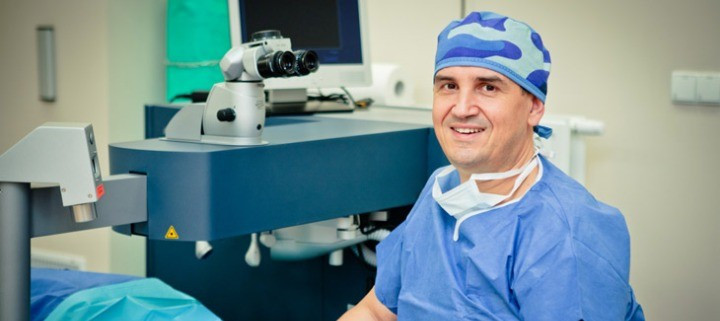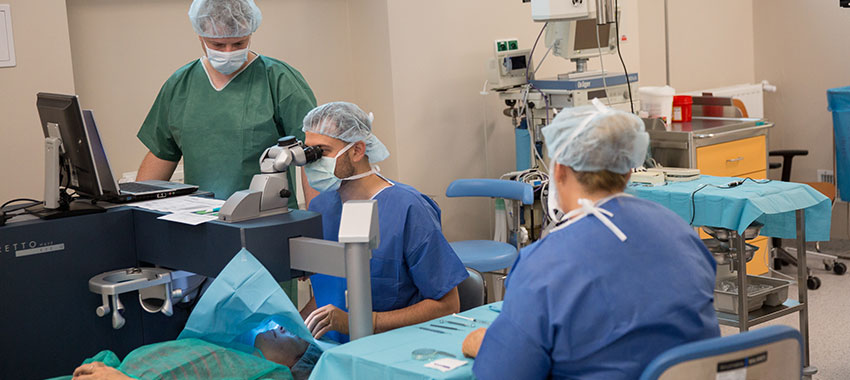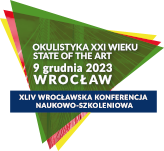Correction of vision defects
The methods of correction of vision defects:
LASER VISION CORRECTION
Laser vision correction is an effective and very precise surgical method which restores the full comfort of healthy vision. Laser vision correction treatments are currently the safest way to permanent elimination of refractive errors.
Active life without glasses
Laser vision correction is an effective and very precise surgical method which restores full comfort of healthy vision. Laser vision correction treatments are currently the safest way to permanent elimination of refractive errors, such as myopia, hypermetropia and astigmatism. A large majority of patients who have undergone the treatment declares positive results of laser vision correction, by not wearing glasses or contact lenses at all.
Are you a candidate for treatment?
The ophthalmologists specialized in refractive surgery decide about qualifying for the treatment. Qualification bases for treatment are detailed examinations that diagnose eye condition and determine the possibility of performing laser vision correction. The examinations are performed within one day and usually last from 1,5 to 2 hours. On the same day the doctor decide whether or not to qualify the patient for laser vision correction.
The treatment is painless, safe and successfully performed in ophthalmic surgery for many years. It is performed in outpatient conditions. Diagnostic and operating equipment used in SPEKTRUM to perform laser vision correction allows to proceed with the treatment taking into account the unique, individual construction of an eye. Precise preparation for the operation, based on the results of high-quality research, allows for the optimal assessment of indications.
At the SPEKTRUM clinic we perform laser vision correction treatments using LASIK method, which is currently the most common method in the world; FemtoLASIK, which is the most modern method as well as EBK and LASEK. Our specialist uses laser to change the shape of front, transparent part of the eye- the cornea.
A patient returns home within an hour after the treatment. Removing eye defect and restoring the correct vision is permanent. Unfortunately, sometimes there are specific conditions which make the performance of the laser vision correction risky and thus they are strongly advised against by doctors.
Age - laser vision correction treatment is performed at the time of full development of the eye and when the eye defect is stable. Ideal candidates are people aged 21 to 55. In this age group, the defect is generally stable and the organism is young enough to quickly regenerate and deal with healing. Qualification bases for treatment are detailed examinations on the basis of which a doctor decides on qualification and proposes methods of treatment.
Defect - the treatment may correct myopia up to -14 dioptres, hypermetropia (or farsightedness) up to +6 dioptres and astigmatism up to 5 dioptres. If spherical and cylindrical defects occur together, they may be removed completely, provided that they do not exceed the maximum possible value after summing up individual defects. However, these are individual cases and should be consulted.
At the SPEKTRUM clinic we can also help with the financing of laser vision correction treatment. We offer our patients interest-free credit so that their material status was not an obstacle in maintaining good health.
The methods of laser vision correction
FemtoLASIK
is one of the most modern methods of laser vision correction available in the world.
It is an improved LASIK surgery, during which instead of using the mechanical microkeratome blade to incise the cornea, the femtosecond laser, computer-controlled, is used.
It allows for making flaps for LASIK surgeries with the possibility of choosing diameter and thickness of the flap as well as the angle of the flap's sides.
The femtosecond laser, in comparison with mechanical microkeratomes, provides:
- greater predictability of flap thickness (it may be reduced to even below 100 µm) which allows for saving the corneal tissue, increasing safety of treatments of more serious visual defects and increasing the range of corrected defect.
- due to laser accuracy, the possibility of the occurrence of intraoperative complications is lower,
- it also allows for faster vision rehabilitation and it affects patient psychological comfort after the treatment.
Precise preparation for the operation, based on the results of high-quality research, allows for the optimal assessment of indications.
LASIK
This is a technique which takes place in two stages. The first one is flap creation. The surgeon incises the cornea using disposable microkeratome blade. Subsequently, the surgeon unbends the flap and the modeling of the inner layers of cornea with laser begins. After surgery, a specialist places back the flap into its original position.
LASIK method reduces post-operative discomfort for the patient and significantly reduces the period of convalescence. A clear vision is restored within a few days after surgery.
LASEK
This is a so-called cosmetic technique recommended for patients with deep set eyes and a thin cornea. It consists in separation of the epithelium from the surface of cornea using alcohol solution. Deeper layers of the cornea are then subjected to laser operations.
After the surgery the patient must wear contact lens for a few days since for 2 to 3 days after LASEK procedure, slight pain or photosensitivity may be felt. A clear vision is restored within 2 weeks after surgery.
EBK
It consists in gentle dissection of the corneal epithelium using a special tool EpiClear. Excimer laser is used on the corneal surface without epithelium and modifies the corneal curvature accordingly for the corrected defect. After surgery, ‘band-aid’ contact lens is applied on the eye. A clear vision is restored within 2 weeks after surgery.
REFRACTIVE LENS EXCHANGE
Modern premium lenses are a unique technological innovation that may provide excellent vision in the entire spectrum of vision – both in short and far distances- and with lesser dependence on glasses.
Refractive lens exchange is a corrective eye surgery aimed to eliminate the need for wearing glasses. Vision defect is generally caused by disorders in the structure of the eyeball, e.g. elongated eyeball, too shallow cornea and others. Causes may be numerous but inherent defects are among the most common. In order to improve vision, patient has to wear glasses or contact lenses.
Who can undergo this type of surgery?
Most benefits can be seen in patients with a vision defect, far-sightedness, short-sightedness and astigmatism, who want to stop wearing glasses. Persons suffering from presbyopia, who need to use glasses for reading, are more frequently qualified for the treatment. The surgery is considered in a situation where laser treatment of vision defect is contraindicated. In case of patients with early signs of cataract, which is the clouding of the lens or presbyopia, refractive lens exchange is the preferred treatment method.
What does the surgery consist in?
Refractive lens exchange consists in removal of own lens and implanting an artificial lens whose parameters are tailored to the size of patient’s eyeball. The procedure is similar to cataract surgery, which is the replacement of the clouded lens with an artificial one. Refractive lens exchange applies to own clear lens which is removed in order to change the optical power and to correct the vision defect.
The surgery is performed under local anaesthetic at an operating theatre, having previously selected an appropriate lens. The selection is always personalised. Each patient is different and requires a different approach.
IMPLANTATION OF PHAKIC LENSES
as an alternative method of vision correction for patients who did not qualify for laser treatment of vision defect.
I have a vision defect. I am short-sighted and wear glasses. Does it have to stay this way?
No.
There are several options in this situation: laser treatment, refractive lens exchange or implantation of phakic lenses.
What does this procedure consist in?
During the eligibility visit the physician performing the procedure of phakic lens implantation analyses the measurement results and, together with the patient, selects an appropriate lens. In the course of the surgery under local anaesthetic carried out at an operating theatre, the phakic lens is placed behind the iris and before own lens. Phakic lens corrects the vision defect whereas the intact own lens retains its ability to accommodate that enables reading. It is worth noting that the procedure is reversible - the implanted lens can be successfully removed.
Who is this surgery recommended for?
Phakic lenses are manufactured in various optical capacities for correction of short-sightedness, far-sightedness and astigmatism. They are most frequently used in case of patients with significant defects that do not qualify for laser treatment. The following are the contraindications for the surgery: cataract, glaucoma, presbyopia and too shallow anterior chamber of the eye. It is because of the structure of the eyeball that the physician recommends exchanging the lens.





